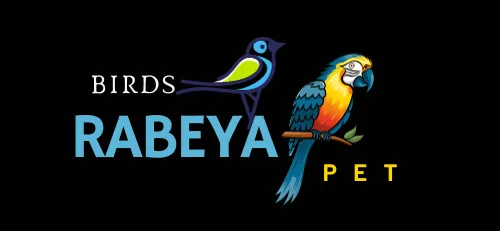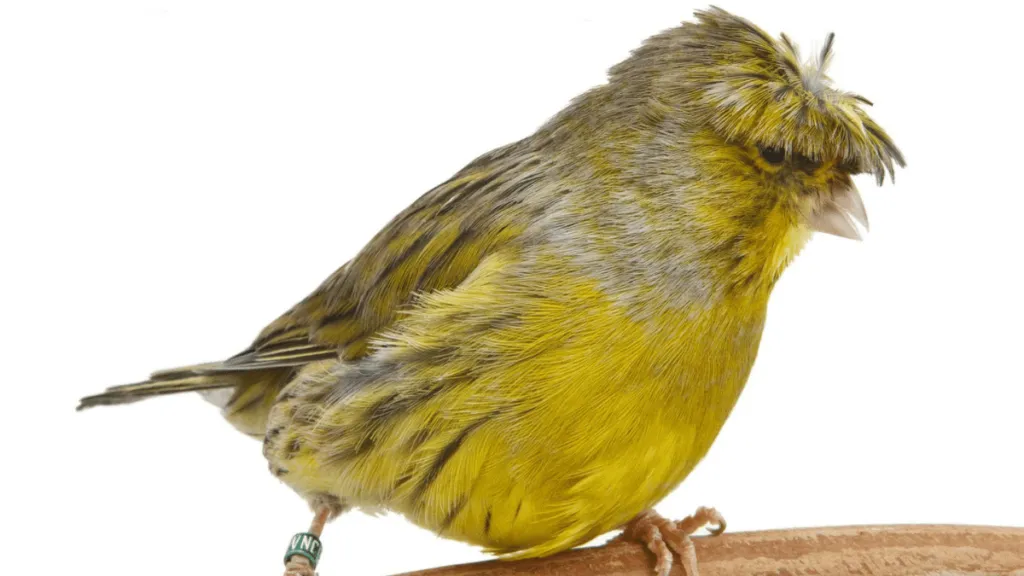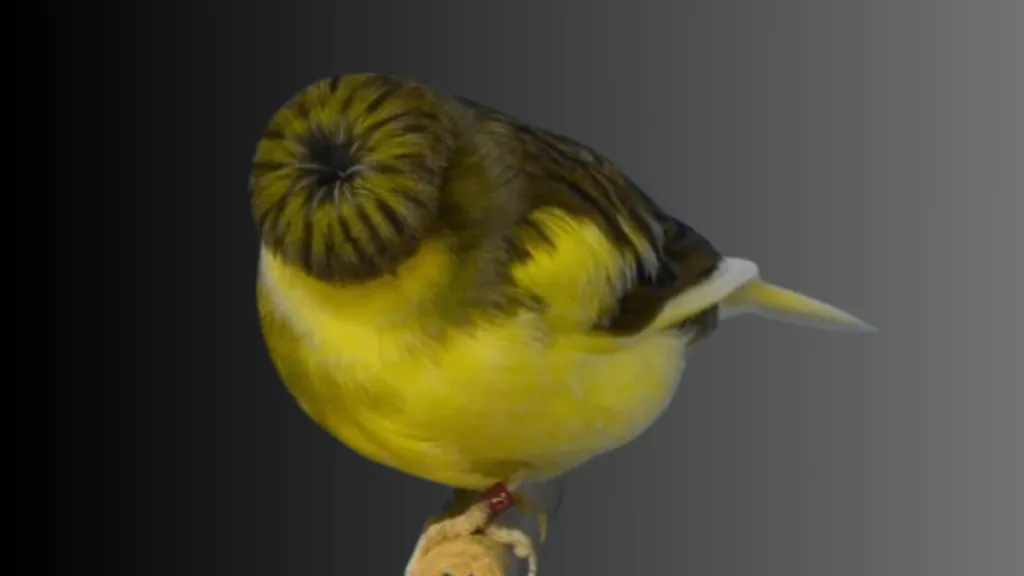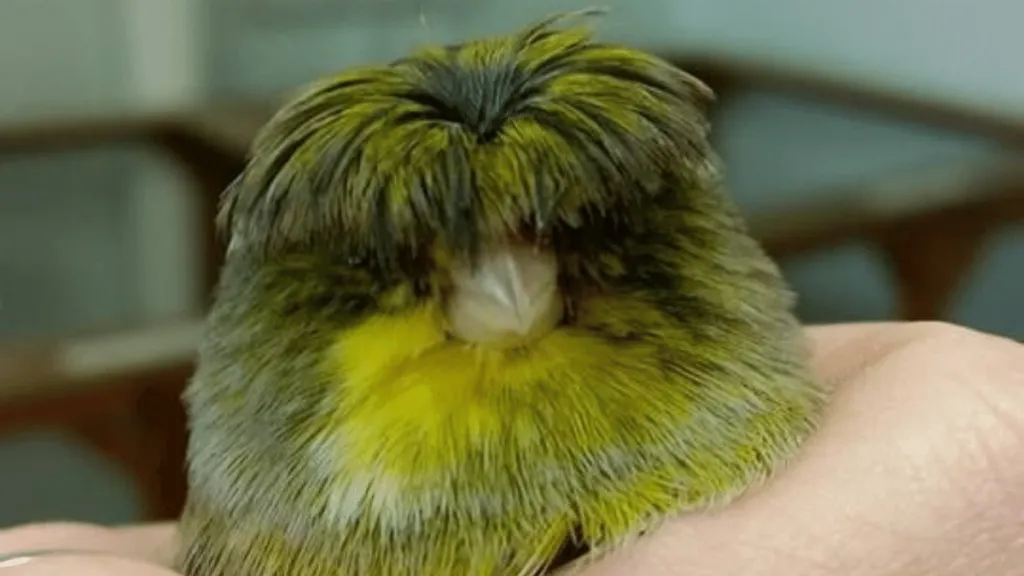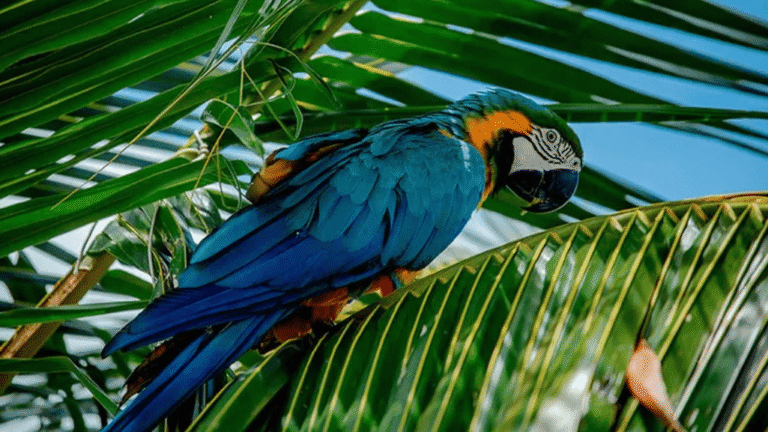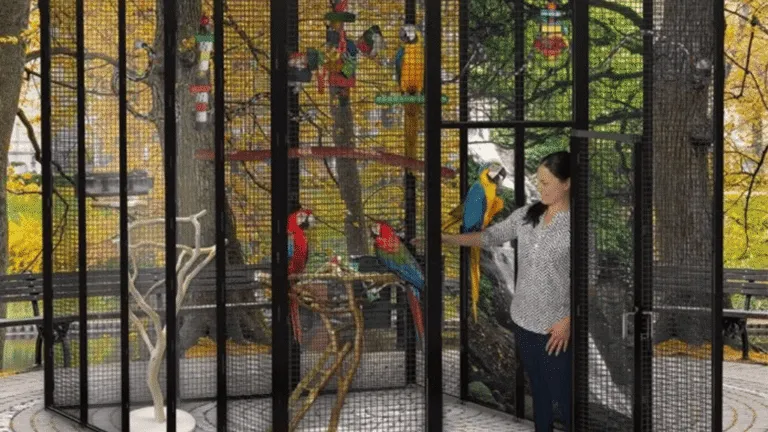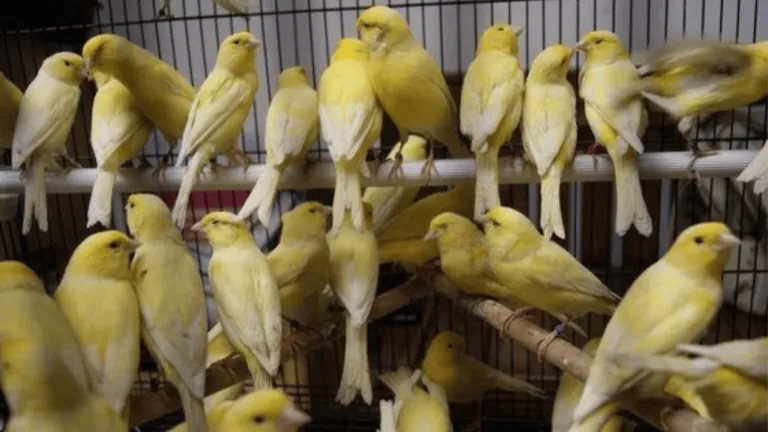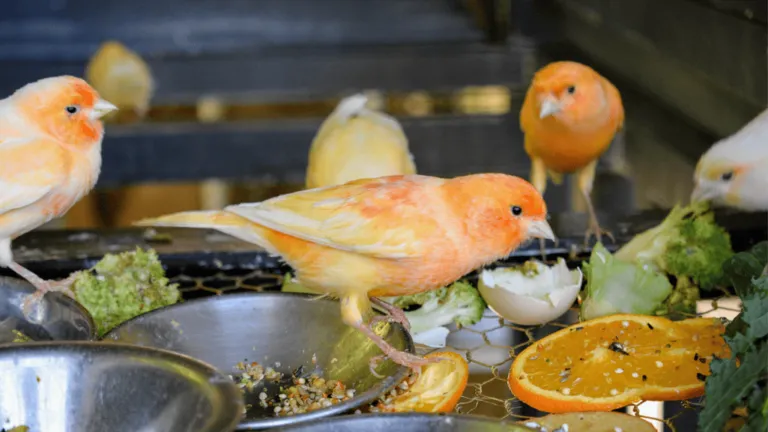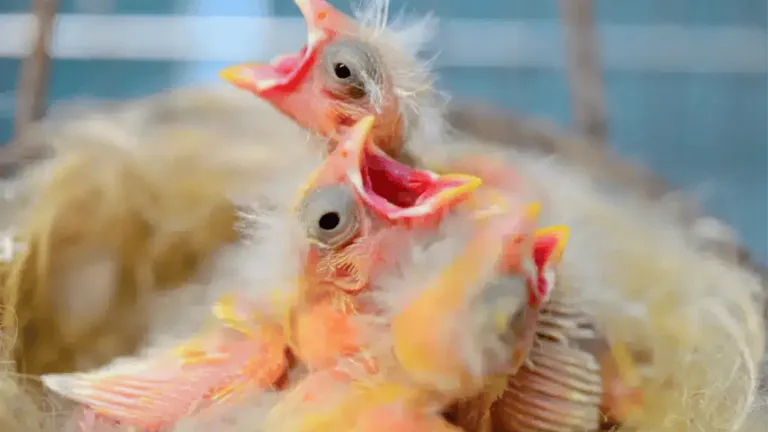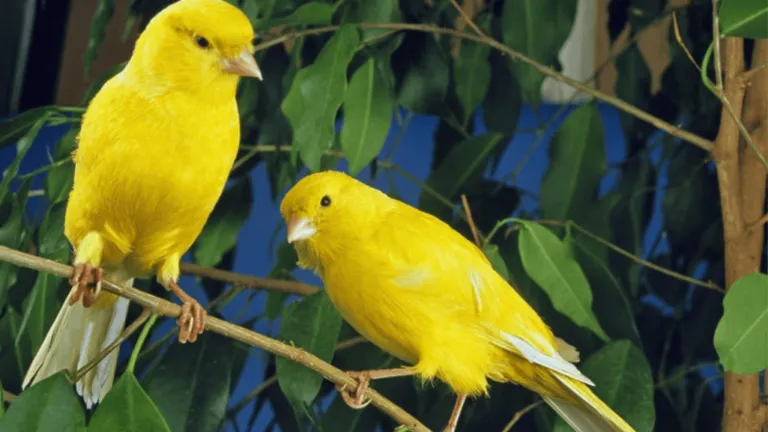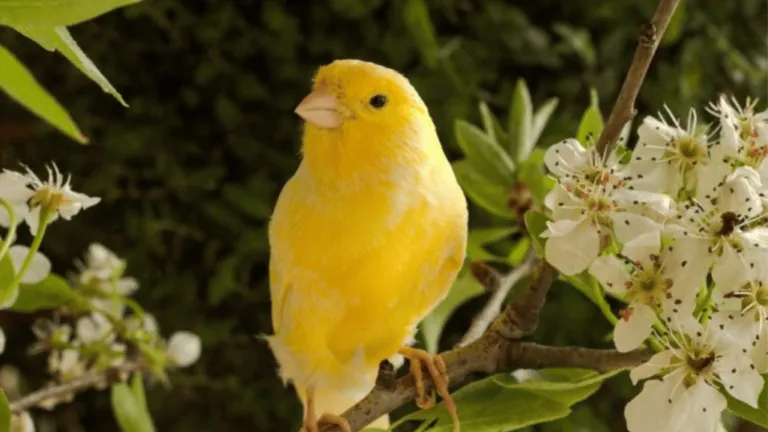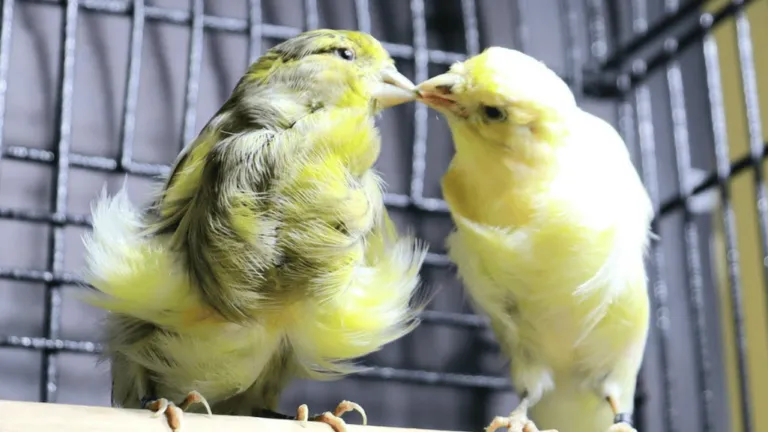The Crested Canary is a unique and beautiful bird that captivates with its crown-like tuft of feathers on its head. These canaries are highly regarded in the avian world for their docile nature and stunning coloration. If you’re interested in canary breeding techniques, the Crested Canary is a fascinating breed to explore.
Key Takeaways
- The Crested Canary is known for its regal appearance and gentle demeanor.
- Specific breeding techniques are crucial for ensuring the health and well-being of Crested Canary offspring.
- The Crested Canary is a prized breed among canary enthusiasts.
- Proper care, feeding, and socialization are essential for the well-being of Crested Canary birds.
- Crested Canary birds bring joy and beauty to their owners’ lives.
What are the Different Types of Crested Canaries?
Understanding Canary Varieties and Breeds
When we talk about crested canaries, we’re diving into a fascinating world of canary varieties. The domestic canary, or serinus canaria, has been bred for specific traits, leading to a diverse range of canary breeds. Among these, crested canaries stand out with their distinctive tuft on the head. Popular canary types include the Norwich canary, known for its robust build and rich song, and the Lancashire canary, which is often recognized for its size and feather quality. Each of these breeds carries its unique charm, but crested varieties include the Gloster and the Stafford, which have become favorites among bird lovers for their beauty and personality.
What Makes the Gloster Canary Unique?
The Gloster canary is a true showstopper in the world of crested canaries. Originally bred in England, this breed is celebrated for its captivating crest, which sets it apart from other canary types. The Gloster comes in two varieties: the Coronation and the Consort. The Coronation has a full crest that’s particularly prominent, while the Consort has a less pronounced tuft. Both types boast a delightful personality and are known for their lively nature and pleasant songs, making them ideal companions for pet bird enthusiasts. Whether you prefer a playful Gloster or a more mellow companion, this breed is sure to bring joy to your home.
Exploring Other Popular Canary Types
While Gloster canaries are a favorite, there are many other popular types of canaries worth mentioning. The Norwich canary, with its impressive feathering and rich vocalization, is a classic choice among breeders. Then we have the Stafford canary, known for its sturdy frame and melodious tunes. Additionally, the frill canaries, with their unique feather patterns, offer a different aesthetic appeal. And let’s not forget the eye-catching yellow canaries, which are a timeless choice for anyone looking to add a pop of color to their aviary. Each canary breed brings its own flair, making the world of canaries incredibly diverse and exciting.
How to Care for Your Crested Canary?
Essential Canary Care Tips for Pet Bird Owners
Caring for a crested canary is not just about providing food and water; it’s about ensuring a happy and healthy environment. First off, make sure to provide a spacious aviary or cage where your canary can stretch its wings and perch comfortably. Canaries are social creatures, so consider adding a companion if your space allows. Regular interaction and gentle handling will help your canary develop a trusting bond with you. Be mindful of their health; regular vet check-ups are essential to spot any potential issues early on. And remember, a clean environment is critical for your canary’s well-being, so regular cleaning of the aviary is a must!
Creating a Comfortable Aviary for Your Canary
Your canary’s home is its sanctuary, so creating a comfortable aviary is key to their happiness. Start with a spacious cage that has horizontal bars for climbing; canaries love to explore! Add different perches at varying heights to encourage exercise. Natural wood perches are ideal, as they help keep their beaks and claws healthy. Incorporate toys and swings to keep your feathered friend entertained. Don’t forget to provide a cozy nesting area, especially if you’re considering breeding crested chicks. Lastly, ensure that the aviary is placed in a well-lit area but protected from direct sunlight and drafts.
Feeding and Nutrition for Crested Canaries
Nourishing your crested canary requires attention to detail. A balanced diet is crucial to maintaining their vibrant colors and health. High-quality canary seed mixes are a staple, but don’t stop there! Supplement their diet with fresh fruits and vegetables; they love leafy greens, carrots, and apples. Calcium is also vital, particularly for breeding canaries, so consider providing cuttlebone or mineral blocks. Fresh, clean water should always be available. Keep an eye on their eating habits; any sudden changes could indicate health issues, so be proactive in monitoring their diet.
What is the History of the Crested Canary?
The Origin of the Crested Canary and Its Breeds
The crested canary’s fascinating history dates back to its origins in the Canary Islands, where these charming birds were first discovered. Over time, breeding practices began in the 1800s, leading to the emergence of various canary breeds, including the beloved crested varieties. Breeders sought to enhance specific traits, such as the crest, song, and coloration, resulting in the diverse types of canaries we see today. The intentional breeding of canaries for specific characteristics has played a significant role in the development of breeds like the Gloster and Norwich, each with its unique charm and history.
How the Gloster Canary Came to Be
The Gloster canary’s journey is particularly intriguing. Developed in England, this breed was initially bred from a mix of domestic canaries and other local breeds. Breeders focused on creating a canary with an impressive crest and delightful song, and thus the Gloster was born. Its popularity soared in the early 20th century, thanks to its striking appearance and engaging personality. Today, the Gloster canary remains a beloved choice among bird enthusiasts, representing a tradition of careful breeding and passion for aviculture.
The Evolution of Canary Varieties since the 1800s
Since the 1800s, the evolution of canary varieties has been nothing short of remarkable. Breeders have experimented with different pairings to create new mutations and enhance traits like feather quality, coloration, and song. As a result, we have witnessed the birth of numerous canary breeds, each with its distinct characteristics. The crested canaries, including the well-known Gloster, have become a testament to the creativity and dedication of breeders. This ongoing evolution keeps the world of canaries vibrant and exciting, ensuring there’s always something new to discover.
What are the Unique Features of Crested Canaries?
Understanding the Crest and Its Significance
The most striking feature of crested canaries is undoubtedly their crest. This tuft of feathers atop their heads not only adds to their aesthetic appeal but also signifies their breeding lineage. The shape and prominence of the crest can vary significantly among different breeds, with the Gloster showcasing a particularly impressive tuft. This unique characteristic is a result of selective breeding, and it’s one of the reasons why crested canaries are so adored. The crest is not just for show; it also plays a role in their mating rituals, as a more prominent crest can attract potential mates.
Color and Song Variations in Canaries
Canaries are famous for their vibrant colors and enchanting songs, and crested canaries are no exception. These birds can come in a range of colors, from classic yellows to stunning shades of orange and even more exotic hues. The coloration often depends on the specific breed and breeding practices. Alongside their appearance, the song of a canary is equally important. Many pet owners choose their canaries based on their vocal abilities, as some breeds are renowned for their melodic tunes. The combination of color and song makes the crested canary a feast for the senses!
Common Mutations Found in Crested Canaries
As with any popular breed, crested canaries have their share of common mutations that breeders often explore. These mutations can affect feather patterns, color, and even the shape of the crest. Some mutations lead to stunning visual changes, making each bird unique. For instance, you might come across a crested canary with a strikingly different feather color or an unusually shaped crest. Breeding crested to crested can lead to fascinating outcomes, producing live crested chicks with unpredictable traits. This element of surprise is one of the many joys of being a canary breeder or owner.
How to Choose the Right Crested Canary for You?
Factors to Consider When Selecting a Canary Breed
Choosing the right crested canary can be a delightful yet challenging task. Consider your lifestyle and preferences first. Do you want a bird known for its vibrant song or one with a striking appearance? Think about the space you have available; some canary breeds require more room to thrive than others. Additionally, consider your experience level. If you’re a first-time pet bird owner, you might want to start with a more docile breed. Take your time in selecting the perfect canary; after all, this little feathered friend will be a part of your life for years to come.
What to Look for in a Breeder
When it comes to finding your new feathered friend, choosing the right breeder is crucial. Look for a breeder who specializes in crested canaries and has a good reputation in the aviculture community. Ask for references and check online reviews. A reputable breeder will be happy to answer your questions and provide information about their breeding practices. They should also be knowledgeable about the health and genetics of their birds. Make sure to visit the breeding facility if possible; it will give you a chance to see the living conditions of the birds and ensure they are well cared for.
Differences Between Male and Female Canaries
Finally, it’s essential to understand the differences between male and female canaries. Males are typically more colorful and are known for their singing abilities, while females tend to have a more subdued appearance and are quieter. If you’re looking for a vocal companion, a male crested canary might be the way to go. On the other hand, if you prefer a more laid-back pet bird, a female could be a better fit. Regardless of gender, every crested canary has its own personality and charm, making them delightful companions in any home.
The Gloster canary is a beloved songbird that originated in England and is known for its enchanting melodies. With its charming voice and captivating tunes, this British canary breed has won the hearts of bird enthusiasts worldwide.
The Gloster canary is available in two distinct varieties: the Gloster Corona and the Gloster Consort. The Gloster Corona is characterized by its round crest on top of its head, resembling a crown. On the other hand, the Gloster Consort has a flat head, giving it a unique and distinguished appearance.
These canaries have a rich history dating back to the 1920s when they were first bred in Gloucestershire, England. Since then, they have become highly sought after for their exceptional beauty and sweet singing ability.
The Gloster Corona and Gloster Consort
The differences between Gloster Corona and Gloster Consort canaries extend beyond their physical appearances. While both possess the characteristic charm of the Gloster canary, each variety offers unique qualities:
- The Gloster Corona: With its round crest resembling a crown, the Gloster Corona exudes elegance. This variety showcases the Gloster canary’s distinctive feature and is considered the epitome of its breed.
- The Gloster Consort: While lacking the round crest, the Gloster Consort displays a flat head, which sets it apart from other canaries. This striking variation highlights the Gloster canary’s adaptability and versatility.
Both the Gloster Corona and the Gloster Consort contribute to the rich and diverse world of canary breeds, their unique characteristics adding to the allure of the Gloster canary as a whole.
Take a moment to visualize the exceptional beauty of the Gloster canary:
Now that you have learned about the Gloster canary’s origins, magnificent singing ability, and the two remarkable varieties within the breed, let’s delve further into the fascinating world of these British canary birds.
Crested Canary Characteristics and Habitat
Canary Varieties: Crested, Gloster, and Domestic Canary Breed Guide
Canaries have long fascinated bird enthusiasts with their vibrant colors and melodious songs. These small, lively birds are part of the finch family and have been bred into various canary varieties over the years, each with its unique characteristics. This guide will delve into the enchanting world of crested, Gloster, and domestic canary breeds, giving you insights into their care, history, and what makes each type so special.
What are the Different Canary Types and Breeds?
How Do Crested Canaries Differ from Other Breeds?
Crested canaries are among the most distinctive of the canary breeds, known for the unique tuft of feathers adorning their heads. This characteristic crest sets them apart from other canary types, making them a popular choice for those seeking a visually striking pet bird. The crest can vary in size and shape, with some resembling a stylish cap, while others might have a more elaborate feather arrangement. Breeding crested to crested can result in live crested chicks by breeding, continuing the lineage of this fascinating breed. However, it’s important to note that breeding crested to crested can sometimes lead to genetic issues, so careful selection by a knowledgeable breeder is crucial.
What Makes the Gloster Canary Unique?
The Gloster canary is celebrated for its charming appearance and delightful song. This breed includes two main varieties: the Gloster Corona, with its distinctive crest, and the Gloster Consort, which is smooth-headed. The Gloster’s crest, particularly in the Corona variety, gives it an adorable, helmet-like look that endears it to many avian enthusiasts. Gloster canaries are typically small and compact, making them a popular choice for both novice and experienced bird keepers. Their pleasant temperament and ease of care further add to their appeal, making them a delightful addition to any aviary.
How Have Domestic Canaries Evolved Over Time?
The domestic canary, originally bred from wild canaries found in the Canary Islands, has undergone significant evolution over centuries. Breeders have focused on enhancing specific traits such as color or song, leading to a wide array of canary varieties. From the vibrant yellow canaries to the elegantly muted colors of the Stafford canary, there’s a type of canary to suit every preference. As breeding techniques advanced, canaries became more diverse, with variations in size, feather texture, and song capabilities. This evolution reflects the creative efforts of breeders to meet the demands of canary enthusiasts worldwide.
How to Choose the Right Canary Breed for Your Home?
What Should You Consider When Selecting a Canary as a Pet Bird?
Choosing the right canary breed involves considering several factors to ensure a harmonious match between the pet bird and its owner. First, determine whether you’re more interested in a canary’s color or song. Some breeds are known for their vivid plumage, while others are celebrated for their melodic singing. Additionally, consider the canary’s temperament and care requirements. While most canaries are relatively easy to care for, certain breeds might require more attention, particularly those with distinctive features like a crest. Lastly, consider the space available in your home. Canaries are small birds, but they thrive with room to perch, fly, and explore.
How Do Canary Types Influence Their Care Requirements?
The type of canary you choose can significantly influence its care requirements. For instance, canaries with elaborate crests, such as the crested norwich or Gloster canaries, may require additional grooming to maintain their feather health. These birds might also be more sensitive to dust and debris, necessitating frequent cage cleaning. On the other hand, common canaries or frill canaries might have simpler care needs, focusing more on diet and enrichment. Understanding the specific needs of your chosen canary type will help ensure a happy, healthy life for your feathered friend.
What Role Does a Canary’s Crest Play in Selection?
The crest of a canary plays a significant role in its selection for breeders and pet owners alike. A well-formed crest is often a sought-after trait, adding a touch of elegance and uniqueness to the bird’s appearance. However, it’s essential to be mindful of the potential challenges that come with crested varieties. Breeding crested canaries requires expertise to avoid health issues associated with improper crest development. When selecting a canary with a crest, ensure you’re purchasing from reputable breeders who prioritize the bird’s health and well-being, offering guidance on proper care and maintenance.
How to Care for Your Canary?
What Are the Basic Canary Care Requirements?
Caring for a canary involves meeting its fundamental needs to ensure a vibrant and healthy life. A suitable cage with ample space for flying and perching is essential. Ensure the cage is placed in a well-ventilated area away from direct sunlight and drafts. Canaries thrive on a balanced diet consisting of high-quality seed mixes supplemented with fresh fruits, vegetables, and occasional protein sources like boiled eggs. Regular cage cleaning and fresh water provision are also crucial to prevent disease and promote hygiene. Lastly, social interaction and mental stimulation, such as toys and mirrors, are vital for keeping your canary entertained and content.
How Does Diet Affect the Health of Canaries?
The diet of a canary plays a pivotal role in its overall health and well-being. A balanced diet ensures that the canary receives all necessary nutrients to maintain its vibrant plumage and energetic demeanor. High-quality canary seed mixes form the foundation of their diet, but diversity is key. Fresh fruits and vegetables provide essential vitamins and minerals, while occasional protein sources support muscle development. Additionally, cuttlebone or mineral blocks can help maintain beak health. By paying attention to their dietary needs, you can prevent common health issues and enhance your canary’s quality of life.
What Are Common Health Issues in Crested and Gloster Canaries?
Crested and Gloster canaries, like all pets, can experience specific health issues that owners should be aware of. One common concern for crested varieties is feather-related problems, such as feather cysts, which can occur if feathers grow abnormally. Regular grooming and observation can help catch these issues early. Additionally, respiratory issues are a concern, particularly for Gloster canaries, due to their compact size and crest, which can trap dust. Keeping their environment clean and free from irritants is crucial. Regular veterinary check-ups and attentive care can help mitigate these health challenges, ensuring a long, healthy life for your canary.
How Do Crested and Gloster Canaries Differ in Appearance and Behavior?
What is the Significance of the Crest in Crested Canaries?
The crest in crested canaries is not only a striking visual feature but also a symbol of selective breeding excellence. This tuft of feathers can vary in size and shape, adding a unique flair to each bird. The significance of the crest goes beyond aesthetics, as it represents generations of careful breeding aimed at enhancing specific traits. Crested canaries with well-defined crests are often prized in exhibitions and competitions, showcasing the breeder’s skill and dedication. However, it’s essential for owners to understand the responsibilities that come with crested varieties, ensuring their care needs are met to maintain their health and beauty.
How Does the Gloster’s Crest Affect Its Behavior?
The Gloster canary’s crest, particularly in the Corona variety, can subtly influence its behavior and interactions. While the crest primarily contributes to the bird’s charming appearance, it can also affect its field of vision, making it slightly more cautious in unfamiliar environments. Despite this, Glosters are generally known for their friendly and curious nature, often enjoying interaction with their human companions. Their compact size and distinct crest make them a delightful addition to any home, providing both visual appeal and engaging companionship.
What Are the Behavioral Traits of Domestic Canaries?
Domestic canaries are renowned for their lively personalities and enchanting songs. These birds are naturally inquisitive, often exploring their surroundings with enthusiasm. While they may not be as social as some other pet birds, domestic canaries can form bonds with their owners through regular interaction and gentle handling. They thrive in environments that offer stimulation, such as varied perches, mirrors, and toys. Despite their small size, domestic canaries have a big presence, filling spaces with their cheerful melodies and vibrant energy, making them a beloved choice for bird lovers around the world.
Understanding the History and Breeding of Canaries
How Have Canaries Been Bred Over the Years?
Canaries have been selectively bred for centuries, with a focus on enhancing specific traits such as color, song, and physical characteristics. The history of canary breeding dates back to the 1800s, when breeders began experimenting with different mutations to create unique canary varieties. Over time, this led to the development of specialized breeds like the Norwich canaries, known for their robust build, and the Lancashire canary, recognized for its impressive size. The careful selection and pairing of birds have allowed breeders to preserve and enhance the traits that make each type of canary distinct, ensuring a diverse and vibrant canary population.
What Historical Factors Influenced Canary Varieties?
Several historical factors have influenced the development of various canary varieties. Initially, canaries were brought to Europe from the Canary Islands, sparking interest among bird enthusiasts and leading to widespread breeding. The 1800s saw a surge in popularity for canaries, with breeders focusing on traits like color or song to appeal to different tastes. Economic factors, such as the accessibility of certain breeds and the prices of the crested canary, also played a role in shaping the canary market. As breeding techniques advanced, canaries became more specialized, with distinct varieties like the Stafford canary emerging to meet the growing demand for unique and captivating pet birds.
How Do Breeders Maintain the Unique Traits of Each Type?
Breeders play a crucial role in maintaining the unique traits of each canary type, employing careful selection and breeding practices to preserve and enhance specific characteristics. This involves choosing breeding pairs based on desired traits, such as crest size in crested canaries or song quality in type canaries. Breeders also monitor the health and genetic diversity of their birds, ensuring that the offspring remain robust and free from hereditary issues. By adhering to strict breeding standards and continually refining their methods, breeders contribute to the ongoing evolution and enrichment of canary varieties, ensuring that these delightful birds continue to captivate and inspire enthusiasts worldwide.
The Crested Canary is a small but majestic bird that stands out with its distinctive crown-like tuft of feathers on its head. Measuring around 4.5 inches in length, this enchanting creature captivates bird enthusiasts with its regal appearance.
Native to the Macaronesian Islands, including the Canary Islands, Madeira, and Azores, the Crested Canary thrives in the diverse and vibrant natural habitat of these regions. These birds are often found in groves of semi-open land, where they can easily find food and shelter.
To provide a visual representation of the Crested Canary’s habitat, please refer to the image below:
A Snapshot of Crested Canary Characteristics
- Size: Approximately 4.5 inches in length
- Distinctive Feature: Crown-like tuft of feathers on the head
- Coloration: Varies among individuals, including shades of yellow, white, and brown
- Nature: Known for their docile and friendly temperament
- Native Habitat: Macaronesian Islands
With their charming appearance and adaptability to their natural habitat, Crested Canaries are a true delight to observe and care for. In the next section, we will delve into essential care tips to ensure the well-being of these remarkable birds.
Care Tips for Crested Canary Birds
Proper care is essential for the health and well-being of Crested Canary birds. Here are some important tips to ensure their happiness and vitality:
Housing:
Crested Canary birds should be housed in a spacious flight cage with vertical bars. This allows them to fly and exercise, promoting their physical and mental well-being. The cage should have perches made of softwood or natural tree branches to provide a comfortable resting place.
Feeding:
Provide separate bowls for food, water, and bathing to maintain cleanliness and hygiene. The diet of Crested Canary birds should consist of high-quality commercial pellets enriched with essential vitamins and minerals. Additionally, offer them leafy vegetables, fruits (excluding citrus), and a seed mix for variety and optimal nutrition.
Temperature Control:
Crested Canary birds thrive in temperatures between 60°-70° F during the day and around 40° F at night. Ensure that their environment remains within this temperature range to keep them comfortable and healthy.
Cleaning:
Regular cleaning of the cage is crucial to prevent the buildup of waste and bacteria. Remove droppings, uneaten food, and replace dirty bedding regularly to maintain a clean and odor-free environment. This helps prevent disease and ensures the well-being of your birds.
Bathing:
Crested Canary birds enjoy bathing to keep their feathers clean and healthy. Offer them a shallow dish of water for their bathing needs. Place it in the cage or aviary to allow easy access to clean water for bathing.
Indoor Aviary for Canaries
If you have the space and resources, setting up an indoor aviary for your Crested Canary birds can provide them with a larger living area and a more natural environment. An indoor aviary allows them to have ample space to fly and explore, mimicking their natural habitat.
By following these care tips and providing a nurturing environment, you can ensure the happiness and well-being of your Crested Canary birds.
Feeding and Diet Recommendations for Crested Canary Birds
Proper nutrition plays a vital role in the health and well-being of Crested Canary birds. Providing a balanced diet is essential to meet their nutritional needs and promote overall avian health. Here are some feeding and diet recommendations to keep your Crested Canary happy and healthy:
1. Commercial Pellets:
Include high-quality commercial pellets in your Crested Canary’s daily diet. These pellets are specifically formulated to provide essential vitamins, minerals, and nutrients that canaries need for optimal health. Look for pellets that are enriched with ingredients like omega-3 fatty acids, antioxidants, and probiotics to support their immune system and promote digestion.
2. Leafy Vegetables:
Supplement your Crested Canary’s diet with a variety of leafy vegetables. Offer small amounts of fresh greens such as spinach, kale, and Swiss chard. These vegetables provide important vitamins and minerals, contributing to their overall well-being.
3. Fruits (excluding citrus):
Introduce a variety of fruits into your Crested Canary’s diet, excluding citrus fruits. Apples, pears, berries, and melons are excellent choices. These fruits provide natural sugars, fiber, and additional vitamins to support their health.
4. Seed Mix:
In addition to pellets and fresh produce, offer a high-quality seed mix to your Crested Canary. Look for a mix specifically designed for canaries, ensuring it contains a variety of seeds such as millet, oats, flaxseeds, and hemp seeds. The seed mix provides essential fatty acids and nutrients, adding variety to their diet.
5. Occasional Treat – Dandelion:
Dandelions can be given occasionally as a special treat for your Crested Canary. Dandelion leaves are rich in vitamins A and C, offering additional health benefits. Before feeding dandelions, make sure they are thoroughly washed to remove any pesticides or chemicals.
Remember to always provide fresh, clean water for your Crested Canary, ensuring it is replaced daily. Additionally, monitor your bird’s diet and observe any changes in appetite or weight to ensure they are receiving proper nutrition.
By following these feeding and diet recommendations, you can ensure that your Crested Canary receives the necessary nutrients for a healthy and vibrant life.
| Diet Component | Importance |
|---|---|
| Commercial Pellets | Provide essential vitamins, minerals, and nutrients |
| Leafy Vegetables | Supply additional vitamins and minerals |
| Fruits (excluding citrus) | Offer natural sugars, fiber, and added vitamins |
| Seed Mix | Provide essential fatty acids and nutrients |
| Dandelion (occasional treat) | Rich in vitamins A and C |
Training and Socializing Crested Canary Birds
Crested Canary birds are beloved for their sweet song and friendly nature. While they may not require as much attention as some other bird species, training and socializing them can enhance their bond with their owners and enrich their lives.
One way to provide mental stimulation for Crested Canary birds is through the use of toys. Interactive toys that encourage exploration and problem-solving can keep them entertained and mentally engaged. Rotate their toys regularly to prevent boredom and ensure a stimulating environment.
Environmental enrichment is also crucial for their well-being. Create a stimulating and natural habitat by incorporating live plants, branches, and perches in their cage. These elements not only offer opportunities for physical activity but also mimic their natural environment, promoting their overall health.
Regular interaction with Crested Canary birds is essential. Spend time talking to them, offering gentle touches, and handling them properly. Socialize them with different household members to help them become comfortable with different people and environments. The more positive experiences they have, the better they adapt to new situations.
Monitoring their health is another important aspect of caring for Crested Canary birds. Regularly check for any signs of illness or distress, such as changes in behavior, loss of appetite, or abnormal droppings. If any concerns arise, consult a veterinarian who specializes in avian health to ensure their well-being.
Training Tips for Crested Canary Birds:
- Start training when your Crested Canary is young, as they are more receptive to learning.
- Use positive reinforcement techniques, such as treats or praise, to reward desired behaviors.
- Begin with simple commands, like stepping up on your finger, and gradually introduce more complex tricks.
- Be patient and consistent, as training takes time and repetition.
- Make training sessions short and frequent, focusing on one behavior at a time.
Training and socializing Crested Canary birds not only strengthens the bond between birds and owners, but it also contributes to their overall well-being. By providing mental stimulation, regular interaction, and proper care, you can ensure that your Crested Canary thrives in their environment and enjoys a happy and healthy life.
| Benefits of Training and Socializing Crested Canary Birds | Methods |
|---|---|
| Strengthened bond between birds and owners | Positive reinforcement techniques, such as treats and praise |
| Enriched and stimulating environment | Interactive toys, live plants, and natural perches |
| Adaptability to different people and environments | Socialization with household members |
| Mental stimulation and problem-solving skills | Regular training sessions with simple and complex commands |
| Early detection of health issues | Regular monitoring of behavior and consulting a veterinarian |
Breeding Crested Canary Birds
When it comes to breeding Crested Canary birds, careful consideration and proper selection of breeding pairs are crucial. To avoid certain genetic issues, it is recommended to pair a Crested Canary with a Crest Bred bird, which is a plain-headed canary. By focusing on maintaining proper genetics and coloration and following established breeding practices, breeders can produce healthy and beautiful offspring.
Benefits of Pairing Crested Canary with Crest Bred
- Minimizes the risk of certain genetic issues
- Ensures desired coloration and feather characteristics
- Results in a consistent and uniform appearance of the offspring
Breeders should pay careful attention to the genetic traits and coloration they want to pass on to the next generation. By selectively breeding Crested Canaries with specific characteristics, breeders can achieve desired results. It is important to maintain records of breeding pairs, monitor offspring development, and select the best candidates for future breeding.
| Benefit | Description |
|---|---|
| Minimizes Genetic Issues | Pairing Crested Canary with Crest Bred reduces the likelihood of genetic disorders that can occur when breeding two Crested Canaries. |
| Coloration and Feather Characteristics | By selecting specific Crest Bred birds, breeders can enhance coloration and feather traits in the offspring. |
| Consistent Appearance | Breeding Crested Canary with Crest Bred ensures a more uniform appearance in the offspring, maintaining the desired characteristics. |
The proper pairing of Crested Canary birds is a key factor in successful breeding. Breeders must consider the traits they wish to preserve and improve, while also maintaining the health and vitality of the offspring. With the right techniques and attention to detail, breeders can contribute to the diversity and beauty of Crested Canary bird varieties.
Longevity and Aging of Crested Canary Birds
Crested Canary birds are known for their unique beauty and charming personalities. As beloved pets, their lifespan and aging process are important considerations for their owners. With proper care and attention, these canaries can live a fulfilling life for 10-15 years.
Monitoring Health and Adjusting Care
Just like humans, canary birds experience changes as they age. To ensure their well-being, it is crucial to closely monitor their health and make any necessary adjustments to their care routine. Regular veterinary check-ups can assist in early detection of any potential health issues. Adjustments to their diet, environment, and exercise regimen may be required to accommodate their changing needs.
Contributors to Longevity
Several factors can contribute to the longevity of Crested Canary birds:
- Balanced Diet: Providing a nutritionally balanced diet is vital for their overall health and longevity. A well-rounded diet should consist of high-quality commercial pellets, fresh fruits and vegetables, and occasional treats. This ensures they receive the necessary nutrients and antioxidants.
- Regular Veterinary Check-ups: Routine visits to a qualified avian veterinarian allow for early detection of health issues and prompt treatment.
- Stress-free Environment: Creating a calm and stress-free environment can positively impact their well-being. Limiting exposure to loud noises, sudden temperature changes, and stressors can help promote their longevity.
Average Lifespan of Crested Canary Birds
| Age Range | Life Stage |
|---|---|
| 1-5 years | Young Adult |
| 6-10 years | Adult |
| 11-15 years | Elderly |
The lifespan of a Crested Canary can vary depending on various factors, including genetics, diet, living conditions, and overall care. While some may live beyond 15 years, others may have slightly shorter lifespans. By providing them with optimal care and a nurturing environment, owners can help ensure that their beloved canaries live long and healthy lives.
Cage Requirements and Aviary Recommendations for Crested Canary Birds
When it comes to providing a comfortable and safe environment for Crested Canary birds, cage requirements play a crucial role. These birds thrive in spacious flight cages that allow them to spread their wings and engage in natural behaviors. To ensure their well-being, it is important to meet their specific needs.
Cage Requirements:
- The cage should have vertical bars to facilitate climbing and perches made of softwood or natural tree branches for comfortable and secure resting.
- The dimensions of the cage should be at least 20X15X15 inches, providing ample space for the bird to move, exercise, and stretch its wings.
- Avoid cages with horizontal bars that can hinder the bird’s movement and cause discomfort or injury.
- Ensure proper ventilation in the cage to maintain good air quality and prevent respiratory issues.
- Regularly clean the cage to maintain a hygienic environment and prevent the buildup of dirt, debris, and waste.
Indoor Aviary Recommendations:
For those bird enthusiasts with sufficient space and resources, setting up an indoor aviary can be an excellent option for Crested Canary birds. An indoor aviary offers a larger living area, creating a more natural environment that mimics the bird’s natural habitat. It allows for increased flight and exercise opportunities, promoting physical and mental stimulation for the birds.
When designing an indoor aviary, consider the following:
- Choose a location with adequate space that allows for the installation of perches, branches, and toys for the canaries to enjoy.
- Create a secure enclosure with mesh or wire that prevents escape while allowing for proper airflow.
- Incorporate natural elements such as plants, rocks, and branches to provide a stimulating and visually appealing environment for the birds.
- Ensure the aviary is easily accessible for maintenance and cleaning purposes.
By providing a suitable cage or an indoor aviary, you can create a comfortable and enriching environment for your Crested Canary birds, allowing them to thrive and exhibit their natural behaviors.
Conclusion
Crested Canary birds are a true marvel, adding a touch of uniqueness and beauty to any avian enthusiast’s collection. Their regal appearance with a crown-like tuft of feathers and their melodious songs bring joy and delight to the lives of their owners. Proper care, adequate feeding, and socialization are crucial for their overall well-being and happiness.
Whether they are cherished as beloved pets or showcased in prestigious canary bird shows and competitions, Crested Canaries never fail to captivate the hearts of bird lovers worldwide. Their elegance and enchanting vocal abilities make them stand out among other avian companions. With meticulous attention to their care, Crested Canaries can thrive both as cherished companions and as successful participants in competitions.
As you embark on your journey with Crested Canaries, remember to prioritize their health and happiness. By providing them with a loving and nurturing environment, ensuring their nutritional needs are met, and offering opportunities for social interaction, you can experience the rewarding bond between bird and owner. So, whether you are an experienced breeder, a dedicated pet owner, or an aspiring canary bird enthusiast, Crested Canaries are sure to bring endless beauty and joy into your life.
FAQ
How long do Crested Canary birds live?
Crested Canary birds have an average lifespan of 10-15 years with proper care and a healthy environment.
What is the recommended cage size for Crested Canary birds?
Crested Canary birds should be housed in a spacious flight cage with dimensions of at least 20X15X15 inches to provide enough room for them to fly and exercise.
What should I feed my Crested Canary bird?
Crested Canary birds should be fed a balanced diet that includes commercial pellets enriched with vitamins and minerals, leafy vegetables, fruits (excluding citrus), and a seed mix. Dandelion can be given occasionally as a treat.
How can I train and socialize my Crested Canary bird?
Crested Canary birds can be trained and socialized to interact with their owners. Providing mental stimulation through toys and environmental enrichment, regular interaction, proper handling, and monitoring their health are key to their well-being.
What are the breeding techniques for Crested Canary birds?
Breeding Crested Canary birds requires careful consideration and selection of breeding pairs. Pairing a Crested Canary with a Crest Bred (plain-headed bird) is recommended to avoid certain genetic issues. Breeders should focus on maintaining proper genetics and coloration while following established breeding practices.
How can I create the best environment for my Crested Canary bird?
Crested Canary birds should be housed in a spacious flight cage with vertical bars and perches made of softwood or natural tree branches. For those with the space and resources, setting up an indoor aviary can be a great option, allowing them to have a larger living area and a more natural environment.

